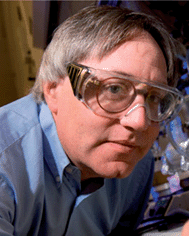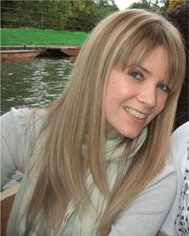Materials Horizons in its second year
It is our pleasure as the Editorial Board Chair (Seth Marder) and new Executive Editor (Fiona McKenzie), to introduce issue 1 of Materials Horizons as it moves into its second year of publication. Our founding editor Dr Liz Dunn has been promoted to the position of Publisher within the Royal Society of Chemistry and we, alongside the entire Materials Horizons team, wish her the best in this position and look forward to working with her in her new capacity.We knew Materials Horizons was going to be an exciting venture, but now after several issues have been published, we have really been able to see how it is paving its way as something different, and that it is being recognized as such by the Materials Community. Materials Horizons seeks to publish work that has developed a new approach or concept. It is not only about reporting higher performance or property values but innovative ideas; the reviewing standards are set extremely high to ensure that only work of exceptional significance is published. Some of the articles highlighted in Table 1 below provide examples of what the journal aspires to publish in terms of quality and diversity of topics.
| A gentle introduction to the noble art of flow chemistry, J. H. Bannock, S. H. Krishnadasan, M. Heeney and J. C. de Mello, Mater. Horiz., 2014, 1, 373, DOI: c4mh00054d, Focus. |
| Protein corona formation around nanoparticles – from the past to the future, P. del Pino, B. Pelaz, Q. Zhang, P. Maffre, G. U. Nienhaus and W. J. Parak, Mater. Horiz., 2014, 1, 301, DOI: c3mh00106g, Review. |
| Molecular crystalline materials with tunable luminescent properties: from polymorphs to multi-component solids, D. Yan and D. G. Evans, Mater. Horiz., 2014, 1, 46, DOI: c3mh00023k, Review. |
| Systematic study of exciton diffusion length in organic semiconductors by six experimental methods, J. D. A. Lin, O. V. Mikhnenko, J. Chen, Z. Masri, A. Ruseckas, A. Mikhailovsky, R. P. Raab, J. Liu, P. W. M. Blom, M. A. Loi, C. J. García-Cervera, I. D. W. Samuel and T. Q. Nguyen, Mater. Horiz., 2014, 1, 280, DOI: c3mh00089c, Communication. |
| Catalyst-free room-temperature self-healing elastomers based on aromatic disulfide metathesis, A. Rekondo, R. Martin, A. Ruiz de Luzuriaga, G. Cabañero, H. J. Grande and I. Odriozola, Mater. Horiz., 2014, 1, 237, DOI: c3mh00061c, Communication. |
| A six-carbazole-decorated cyclophosphazene as a host with high triplet energy to realize efficient delayed-fluorescence OLEDs, T. Nishimoto, T. Yasuda, S. Y. Lee, R. Kondo and C. Adachi, Mater. Horiz., 2014, 1, 264, DOI: c3mh00079f, Communication. |
Our vision has always been to publish high quality work whilst providing an informative resource to researchers working at all career-levels. Materials Horizons Focus articles aim to do just that by delivering an educational emphasis, complementing the research presented in Materials Horizons communication and review articles. The most read and cited Focus article has been Jean-Luc Brédas' “Mind the Gap!” (Mater. Horiz., 2014, 1, 17, DOI: c3mh00098b), which explains the different terminology in describing energy gaps. We are gratified that people responded so positively to this well-written piece which aimed to be primarily of educational value to our readers. Many thanks to Jean-Luc for providing a great example for others. Please let us know if you think a particular area of materials science needs greater clarity or explanation – a Focus article could help.
We recognise that it is our talented community that will keep the quality of the journal high and so we actively seek comments and ideas on all aspects of the journal. Earlier this year, we met with many active researchers at the Materials Horizons symposium which took place at three institutions in the USA: Georgia Institute of Technology, California Institute of Technology and Northwestern University. Audiences ranging from undergraduate students through to some of the field's pioneering scientists heard from 21 speakers over the duration of the event. It was an excellent opportunity to discover new science and learn the stories behind the research.
This past year, as the journal has grown, we were pleased to welcome two new Editorial Board members: Professor Henry Snaith, University of Oxford and Professor Martina Stenzel, University of New South Wales. Martina is one of Materials Horizons' Scientific Editors who joins Professor T. Quyen Nguyen in evaluating the journal's submissions in line with our rigorous reviewing standards.
We are delighted to see how well Materials Horizons has been received by authors, readers and reviewers. On behalf of the Editorial Board and Editorial Office, we thank you for your support as Materials Horizons journeys into becoming the leading journal in its field.
Professor Seth Marder, Editorial Board Chair
Dr Fiona McKenzie, Executive Editor
| This journal is © The Royal Society of Chemistry 2015 |


